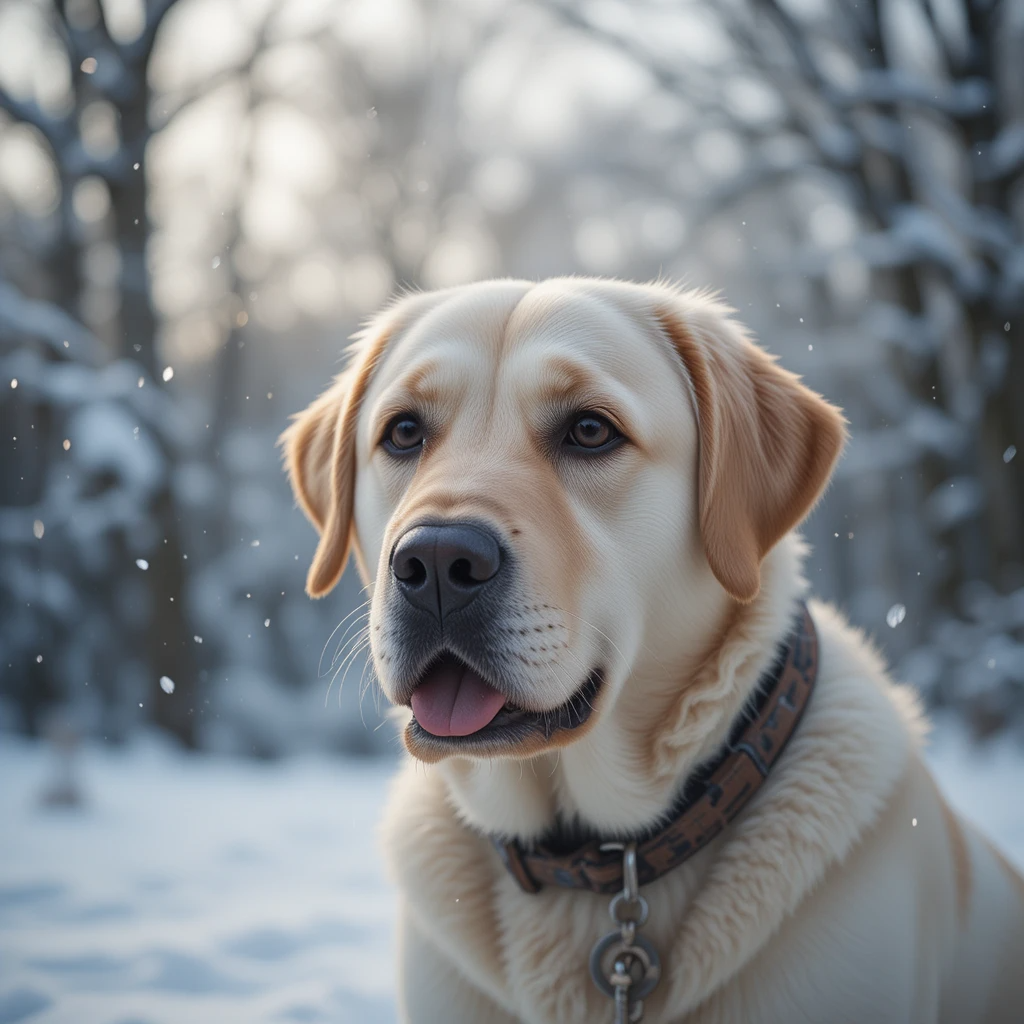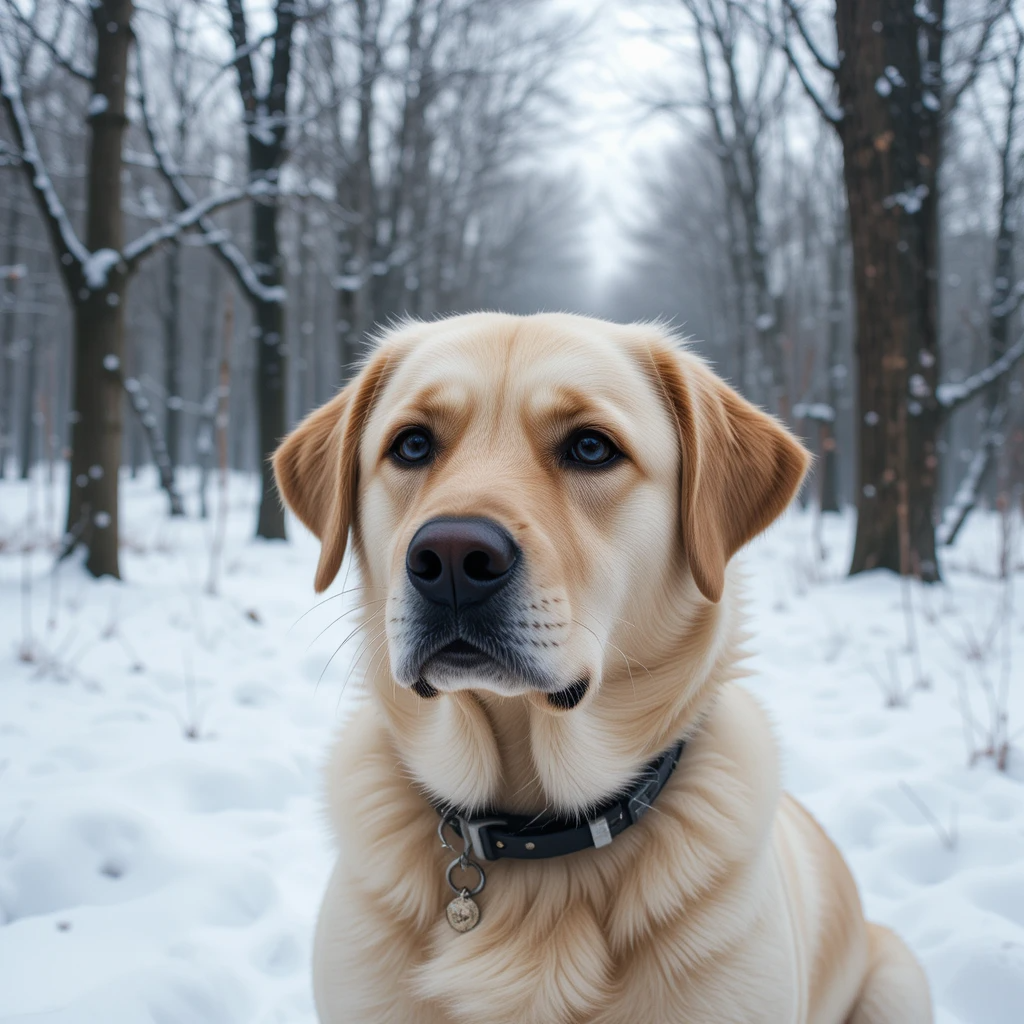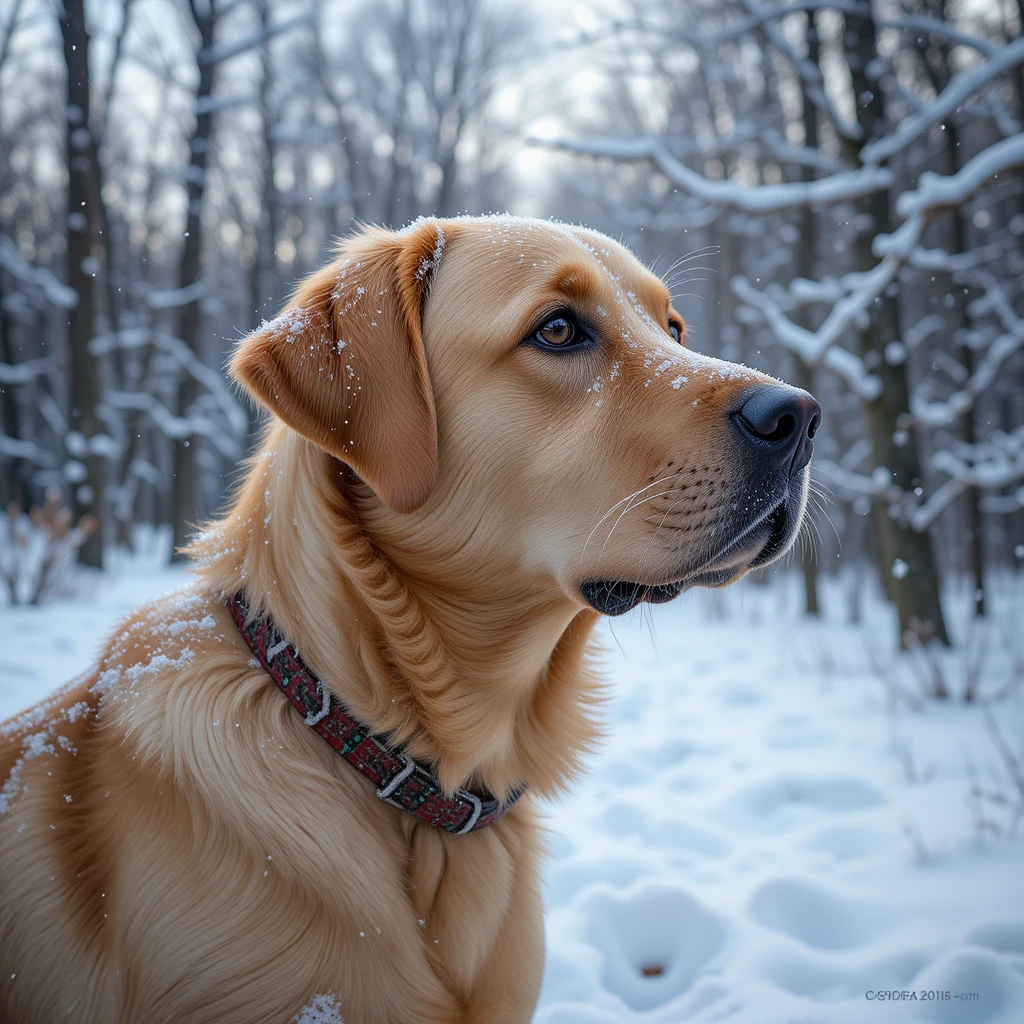As the seasons change and winter rolls in, it’s essential to Winter with Labrador think about how the colder months will affect your Labrador. Known for their friendly and playful nature, Labradors are always up for an adventure, but when it comes to winter, their health and comfort require a little extra attention. Winterizing your Labrador’s care routine is more than just bundling up for walks—it’s about ensuring they remain healthy, safe, and happy all season long. Here’s your ultimate guide to preparing your Labrador for the winter season.
Table of Contents
1. Coat Care: Keep Your Labrador’s Fur Thick and Healthy
While Labradors are blessed with a thick double coat designed to protect them from the elements, the winter months still call for additional grooming and protection. Their fur naturally sheds more in winter, so regular grooming is key to preventing mats, tangles, and discomfort.
- Regular Brushing: Winter can make your Labrador’s fur more prone to matting, especially when they’re outside in the snow or rain. Brushing your dog at least once or twice a week will not only help keep their coat in top shape but also encourage the natural shedding of old fur.
- Winter Coats and Sweaters: Not every Labrador will need extra layers in winter, but if your dog is spending extended time outside in frigid temperatures, consider a warm, water-resistant dog coat. This will provide an additional barrier against the cold and prevent them from getting chilled, especially after they get wet.
- Dry Their Coat After Walks: After outdoor adventures, make sure to dry your Labrador’s coat thoroughly. Wet fur can cause your dog to feel cold and uncomfortable and can even lead to skin irritation over time.

2. Paw Protection: Shield Those Paws from Winter Hazards
Labradors love to run, jump, and explore, even in the snow and slush. But winter poses some serious threats to their paws. From icy sidewalks to the de-icing salt used on roads, it’s important to protect their paws from harm.
- Paw Balms: If you’ve never thought of it before, paw balm can be a lifesaver. It creates a protective layer on your dog’s paws, preventing cracking, dryness, and irritation from cold surfaces and harsh chemicals like road salt.
- Dog Boots for Extra Protection: Not every dog will tolerate boots, but if you can get your Labrador to wear them, they can offer excellent protection. Boots can shield paws from ice, snow, and salt, reducing the risk of injury and discomfort.
- Regular Paw Checks: After every walk, take the time to inspect your dog’s paws for any signs of injury, salt, or ice buildup. Pay attention to the space between the pads, as this is where snow can easily get stuck.
3. Hydration and Nutrition: Keeping Your Labrador Energized in the Cold
As temperatures drop, your Labrador may drink less water, but it’s just as important for them to stay hydrated in winter as it is in summer. Their energy levels and overall health are affected by their diet and hydration.
- Fresh Water at All Times: Make sure your Labrador always has access to fresh water, especially when they’re outside in the cold. If their water bowl freezes, take it with you during walks and offer them water frequently to keep dehydration at bay.
- Adjust Their Diet: As the weather cools down, your Labrador may become less active. If you notice they’re not as energetic as usual, it might be time to adjust their food intake. On the flip side, if they’re still playing outside in the snow, consider adding extra calories to their diet to keep their energy up.
- Winter Treats: Winter is the perfect time to indulge your Labrador with healthy, warm treats. Consider offering them a delicious bone broth or peanut butter-filled Kong, which can keep them happy while providing some extra warmth.
4. Exercise: How to Keep Your Labrador Active in Winter
Even though it’s tempting to snuggle up inside and skip walks during the winter months, Labradors need regular exercise to stay healthy and prevent weight gain.
- Shorter, Frequent Walks: While cold weather may limit long walks, shorter, more frequent strolls can help your dog get enough exercise. Plus, this gives them the chance to get some fresh air and stretch their legs.
- Indoor Play: If the cold is unbearable, or if you simply prefer staying indoors, get creative with indoor activities to keep your Labrador’s energy in check. Use interactive toys, hide-and-seek games, or even a bit of tug-of-war to keep them mentally and physically stimulated.
- Play in the Snow: If your Labrador loves snow, don’t shy away from outdoor adventures. Take advantage of the weather and play fetch in the snow or take a winter hike. Just remember to monitor your dog’s activity and bring them inside when they show signs of being too cold.

5. Safety First: Protect Your Labrador from Winter Hazards
Winter introduces new challenges and risks for your dog, especially when they’re out and about. Keeping them safe during these months requires vigilance and planning.
- No Frozen Water: While Labradors are naturally good swimmers, never allow your dog to approach frozen lakes or ponds. Thin ice is incredibly dangerous, and even experienced swimmers can fall through.
- Watch Out for Salt and Chemicals: While salt is essential for melting snow and ice, it can be harmful to your dog’s paws and overall health. Be mindful of the salt and chemicals that might be on sidewalks and roads, and wipe off your dog’s paws immediately after walks.
- Hypothermia and Frostbite: Prolonged exposure to extreme cold can lead to serious health problems like hypothermia and frostbite. If the temperature drops too low, it’s best to keep your Labrador indoors. If you must go outside, limit their time in the cold and ensure they’re wearing appropriate clothing.
6. Indoor Comfort: Creating a Cozy Space for Your Labrador
Winter is the time when your Labrador will likely spend more time indoors, so it’s important to create a warm, comfortable, and safe environment for them.
- Warm Sleeping Area: Ensure your Labrador has a designated warm, comfortable space where they can rest. Consider elevating their bed off cold floors, and provide extra blankets or a heated dog mat to keep them cozy.
- Avoid Cold Drafts: If your Labrador spends a lot of time indoors, try to keep them away from drafts. This means ensuring they aren’t near windows or doors that let in cold air, especially in older homes.
- Time for Cuddles: Labradors are known for their affectionate nature, so take advantage of the cozy indoor months by spending quality time together. Extra snuggles on the couch or sharing a blanket will help keep both you and your dog warm.
7. Regular Vet Check-ups: Ensuring Winter Wellness
Lastly, don’t forget to schedule a winter wellness check-up for your Labrador. Cold weather can exacerbate certain health issues, so it’s crucial to keep track of their health and adjust their care routine if necessary.
- Health Screenings: A regular vet visit can help address any winter-related health concerns like joint issues, particularly for older dogs. Cold weather can worsen arthritis, so speak to your vet about possible treatments or supplements.
- Preventative Care: Ensure your Labrador is up to date on vaccinations and flea, tick, and worm treatments. Winter might reduce flea activity, but ticks and other parasites are still a risk.

Final Thoughts:
Winter can be a magical season to enjoy with your Labrador. By taking a few extra steps to prepare your dog for the colder months, you can ensure they remain happy, healthy, and active. From proper grooming to protecting their paws, keeping them warm indoors, and maintaining regular vet check-ups, your Labrador will thrive no matter how cold it gets outside. Let this winter be one filled with joy, adventures in the snow, and plenty of warm cuddles by the fire.

